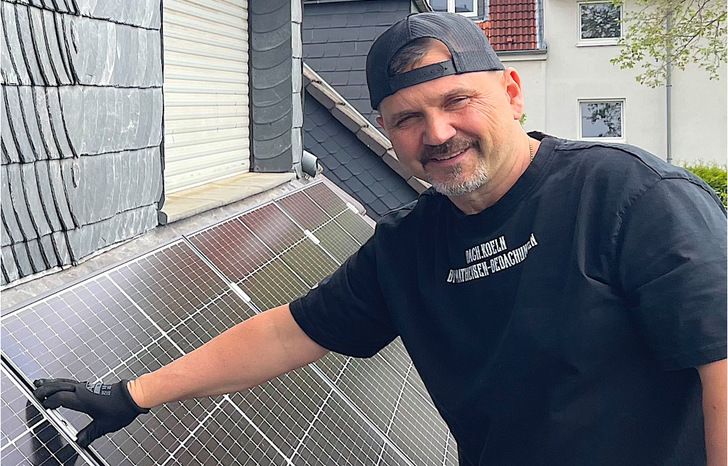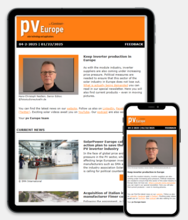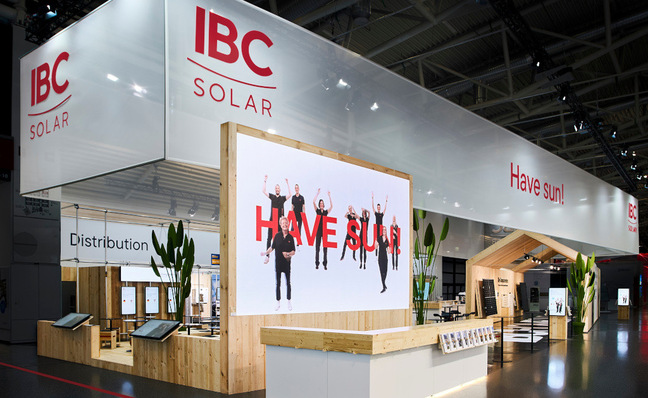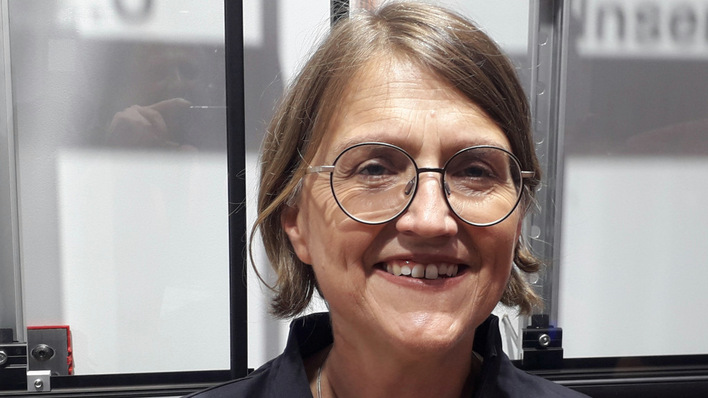More and more roofers are discovering photovoltaics as a second mainstay. In future, they won’t be able to work without solar technology. At the same time, it’s clearly an advantage for homeowners if the roofer is familiar with installing solar systems.
Dont miss! Webinar on 14th April 2025: Simple solutions for complex PV projects – with K2 Systems
There are specific tasks that only the roofer can – and should – carry out, particularly when it comes to ensuring the roof cladding remains watertight. “The roofer is authorised to install the photovoltaic system on both pitched and flat roofs,” explains Michael Zimmermann, Vice President of the German Roofing Trade Association (ZVDH).
Solar folded metal sheet
After all, this is part of the master craftsman’s examination programme for the roofing trade. “There are good reasons for this categorisation, as the installation of a solar system always involves interfering with the roof covering, the roof waterproofing, or the statics,” says Zimmermann.
Solar roof systems: Safety in the face of increasing loads
Manufacturers of mounting systems place great importance on working with roofers. They are increasingly tailoring their products to roofers’ requirements. Roofit, for example, has developed a specialised roof-integrated solution. The Estonian company offers a solar element for standing seam metal roofs, mounted on its own metal plate, which is seamed together with the actual roof covering.
Clamped onto trapezoidal sheet metal
This allows the craftsman to install the whole solution in the same way as a normal standing seam roof, only requiring the individual modules to be fitted and wired together. As the solar elements are attached directly to the metal roof panel, the system achieves the highest fire protection class A1.
Maas Profile has also developed a system for trapezoidal metal roofs that is fastened with clamps but does not require roof penetrations. Maas manufactures the trapezoidal sheet metal with a so-called dovetailed profile. This is a profile whose raised bead tapers from top to bottom. This creates an inverted trapezoid, onto an oppositely shaped clamp is slipped.
K2 Systems: K2 Buddy now for tiled roofs
This is pressed crosswise with a screw to the dovetail profile to create a solid clamp connection. Then a module clamp can be attached to the profile using a hammer-head screw to fix the solar panel in place.
The insulation system manufacturer Romanowski also uses this solution for its new PIR roof panel RD. With the new sandwich panel, roofers can also create insulated trapezoidal sheet metal roofs easily and completely without roof penetration.
Clamp for round seam
Zambelli has introduced a system for round seam roofs without penetration. It is based on two sheets, each with a rounding on one side, which are joined together to form a clamp. These two sheets are placed on the left and right of the round seam and connected with two screws. They are pressed against the seam metal.
Florian Achatz from SL Rack: Innovations in solar mounting
The clamps are equipped with a cut-out. The installer slides the mounting rails into these across the roof and screws the module clamps onto them. As the mounting rails can be moved in the solar clamps, the solar installation is thermally decoupled from the roof.
While penetration of the roof should be prevented as best as possible on metal roofs, it is often impossible to avoid it on flat roofs. Where the load bearing capacity of the roof or the insulation is not sufficient for the solar system with additional ballasting, the connection to the roof is often the last option for installing a solar system.
Christian Ganahl from Aerocompact: Flexible installation on roofs and façades
This is always a job for a roofer. “The flat roof is a task for experts, as the risks involved are significantly higher than with a tiled roof,” emphasises Michael Zimmermann from the ZVDH. If there is a roof penetration, it’s the roofer’s responsibility to ensure it is properly sealed. The necessary products are readily available.
Safe roof penetration
With the SB2 solar fastener, the roof accessories manufacturer BST has developed a solution for the construction of flat roof systems in which the mounting system is fastened with roof penetration. BST uses a sealing disc for this purpose. This is a round adapter made of PVC, which is fitted with a threaded bolt.
Once the fitter has applied a seam sealing paste to the roof cladding, he uses a special attachment for the cordless electric screwdriver to drive the threaded bolt through the roof cladding so that the sealing disc comes to bear on the roof cladding. This is glued to the roof with the seam sealing paste. The actual mounting system is then attached to the threaded bolt.
Miguel Giménez from K2 Systems: “Significant growth opportunities”
Alwitra also has its own mounting solution in its portfolio with the Evatec solar mounting system. It consists of two metal sheets shaped in such a way that a cavity is created underneath them, which is filled with insulating material. These two sheets are screwed together above the cavity. In this way, the screws do not touch the roof cladding. The lower sheet is fastened with long screws through the roof cladding directly to the supporting structure of the roof.
Distribute loads
There is a plastic sleeve between the two sheets. Its material matches the Evalon and Evalastic roofing membranes from Alwitra. This plastic sleeve is welded to the roofing membranes.
In this way, the roof is sealed again. A mounting for solar modules is attached to the upper sheet. As the system is screwed directly to the roof's load-bearing layer, the loads are applied directly to this structure and not to the insulation layer. This increases the durability of the roof.
Marc Uhland from Novotegra: A full kit for any kind of solar mounting
The installation of solar systems involves the risk of damage to the roof cladding. To prevent this, Regupol has developed a special building protection mat that stabilises the roof covering. Regupol Solar has been specially developed for the installation and long-term operation of photovoltaic and solar systems on flat roofs. It is available in different versions.
The building protection mats are also available as fire versions. These flame-retardant versions are suitable for installations with increased fire protection requirements. All building protection mats are designed in accordance with DIN 18531 and the German flat roof guidelines. (su)








